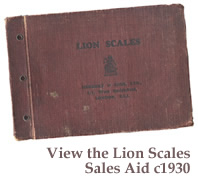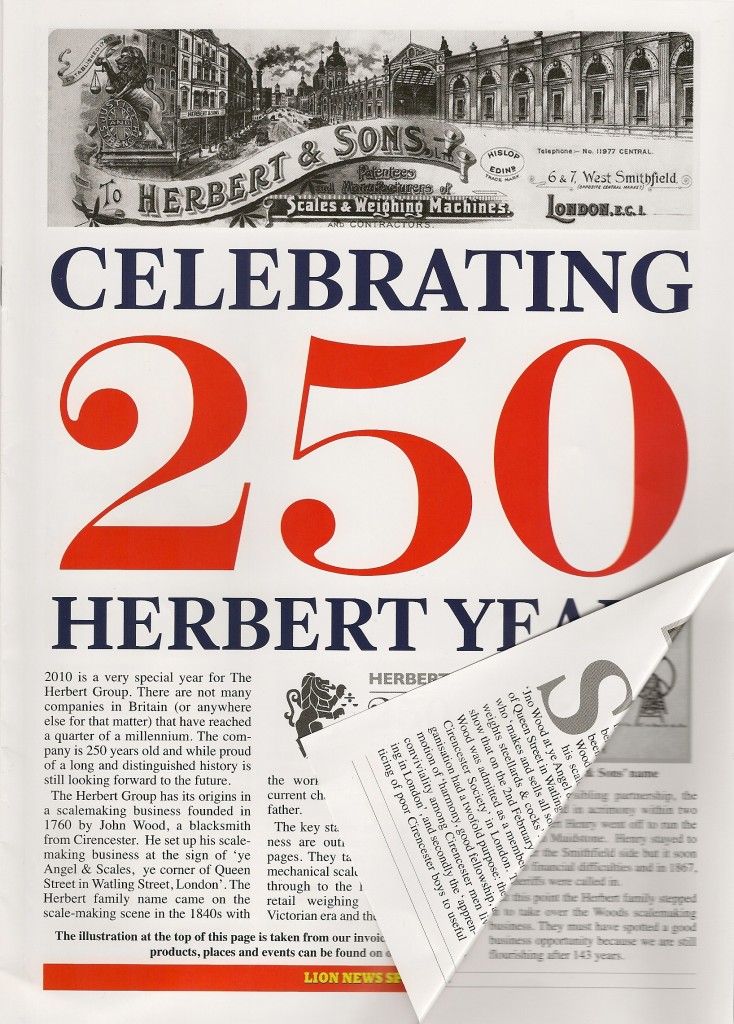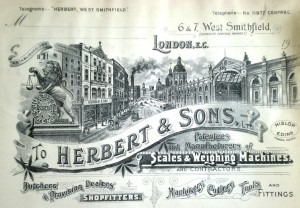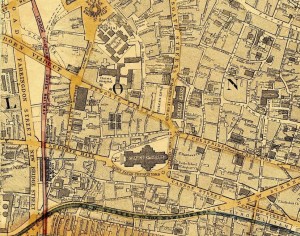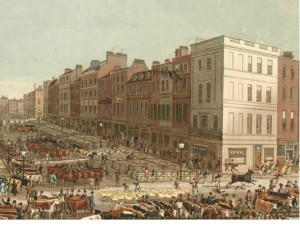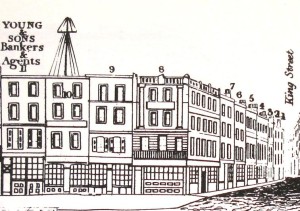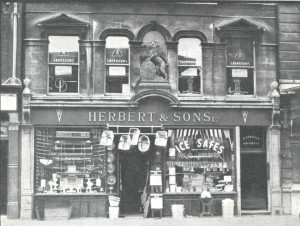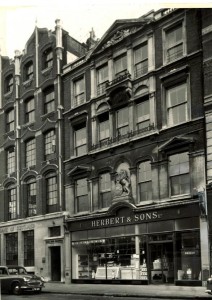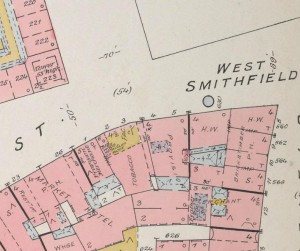London, 6 & 7 West Smithfield6&7 West Smithfield was the focal point of the business for nearly 150 years, from when Richard Wood first took on both buildings circa 1815 until Herbert & Sons moved out in 1960.
However scalemaking had been carried out from 6 West Smithfield since at least 1769, when Thomas Croome was working there. His early address labels state ‘At the Justice & Scales, No.6, near Cow Lane, West Smithfield', and by 1784 this had become ‘At the Sign of the Justice and Scales, at No. 6, West Smithfield, London'.
Thomas Croome died in 1791, and the business was carried on by John Wynn, who later went into partnership with Robert Wood, Richard's nephew and successor, trading as Wynn and Wood.
At that time No.7 West Smithfield, the next door premises, was occupied by William Williams, a cutler. The Williams family business had, according to their 1905 catalogue, been established in 1765 "in Old Smithfield Cattle Market”. However William was made bankrupt in 1810, and although the business continued for another four generations, it vacated No 7 West Smithfield.
In April 1814 the much extended lease of 15 Queen Street, Cheapside finally expired, and only a month later John Wynn died. The Wood's had soon combined the two businesses in the adjoining premises of 6&7.
The earliest picture of the premises that we can find is of 7 West Smithfield in 1831, shown on the extreme right of this print of a view over Smithfield Market, created by a London printmaker Richard Gilson Reeve. The image shows sheep in pens in the square, cattle surrounding the pens, men milling amongst livestock, but also a bull careering out of control down the street past the Wood premises.
A slightly later drawing shows both 6&7 around 1838, when John Tallis published his "London Street Views". However the Wood's name is not shown, as the publication was a commercial venture and it was necessary to subscribe to have the name of a particular business identified.
Richard Wood died in 1836, and Robert took over the firm, being joined later by his two sons, Robert Henry and Henry. Robert died in 1859 and in 1860 a ‘Proposed Plan for improving the Approaches to the Metropolitan Meat Market, Smithfield, and Railway Stations; ……' was published which would have seen the demolition of 6&7 West Smithfield.
We do not know if this was any part of the reason why the brothers dissolved their partnership in 1861, Robert Henry taking the business in Maidstone, whilst Henry stayed to look after the Smithfield business. However, the proposal must have caused a great deal of uncertainty, Henry ran into financial difficulties and in 1867 the bailiffs were called in.
Thomas Herbert bought the Wood's business in December 1867, and moved into them just before the new Central Meat Market opened in November 1868.
Both 6&7 were knocked down and rebuilt in 1888 by Thomas Herbert, who had by then been joined by two of his sons, George and William. The cornerstone was laid by Mrs. Thomas Herbert on April 13th 1889 using a silver trowel, and a dinner was held at the King's Head in Chigwell, commemorated with a tankard engraved with the names of those attending.
The ground floor was used as a showroom, the first and second floors being offices. The basement continued to be used for the manufacture of scales and cutlery until the new factory in Edmonton was opened in 1938.
Our premises are shown on the Goad's Insurance Plan of City of London Vol. II: sheet 42 in 1886, marked as HW (Hardware).
|
Click on the Image(s) For Detail |
